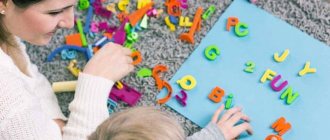The process of growing up and developing a child is associated with many features and nuances. It is important not only to teach the child some knowledge and rules of behavior, send him to kindergarten, and then to school, but also from birth to pay attention to the most subtle actions. For example, the development of fine motor skills.
The development of fine motor skills in children is an extremely important part of the educational process. There are two types of motor skills: gross and fine. The first is responsible for the movement of the arms, legs, torso, and head. Small is finger coordination. And it is the development of fine motor skills that is necessary for the harmonious development of speech. After all, working on finger coordination triggers the necessary processes in the child’s brain for speech development. The more he can do with his hands, the easier it is for him to communicate and express his thoughts. Therefore, it is necessary to pay great attention to such quality as the development of fine motor skills in children.
Why is the development of fine motor skills necessary?
The development of children's speech through fine motor skills has long been known. It has been scientifically proven that the development of fine motor skills is closely related to the development of speech, because The speech and motor centers of the brain are very close to each other. As fine motor skills develop, the speech center also begins to become active.
In addition to speech, fine motor skills also affect thinking skills, imagination, and are associated with motor and visual memory. Thanks to the development of fine motor skills, the child develops observation, attention, and general coordination of movements.
It is also necessary to develop fine motor skills for the reason that the entire future life of a still small person will require him to use coordinated and precise movements. Take at least very basic actions: fastening and unbuttoning buttons and locks, tying shoelaces, putting on and taking off clothes, drawing and writing, working with a computer and much more. It would seem that everything is simple, but a person will not be able to perform any of this properly if his fine motor skills are not developed.
Examples of games and exercises
At 2-3 years old, the baby is already able to cope with Velcro fasteners, large buttons, push objects into holes, disassemble and assemble pyramids, build towers from cubes, draw, sculpt Easter cakes, unscrew lids, string beads on a cord and much more. He's even starting to use baby safety scissors. The more varied the child’s games and activities, the more versatile the development of his hands and fingers will be. This does not mean that you need to buy him as many toys as possible - in any home you can easily find many items suitable for this purpose.
The simplest finger exercises
It’s easy to interest and involve a 2-3 year old child in the game, and the simpler the game, the better.
- "Snail". This exercise will help the little ones learn to hold the ring and little fingers in a bent state with their thumbs, leaving the index and middle fingers straight. You need to clench one hand into a fist and carefully release the 2nd and 3rd fingers from it so that the 4th and 5th remain under the big one. To make it easier for your baby to maintain this combination, you can lightly press it against the upward-turned palm of your other hand. Now it’s time to move your free index and middle fingers, depicting the horns of a snail sitting on a leaf-palm.
- "Legs." The child will certainly enjoy using his index and middle fingers to depict a little man walking on the table, repeating after the adult. To make the game more interesting, you can make shoes for the “legs” from dough or modeling mass, or you can draw a funny face on the back of your hand, turning the little man into a cheerful monster or even an octopus.
- "Glasses". Connecting the thumb and index finger to form a ring is not such an easy task for a baby. But with a little practice, he will be able to build himself improvised glasses and admire his reflection in the mirror. The remaining three fingers, remaining free, can be spread out like a bird's crest, or they can be folded into an intricate figure - it all depends on the imagination and level of finger control.
When playing with your child, show your imagination: this will not only help to amuse him, but also stimulate the development of creative abilities and imagination.
Drawing
When a child picks up pencils, wax crayons or finger paints for the first time, he is delighted to realize that he can now leave colorful scribbles on almost any available surface.
The benefits of drawing are difficult to overestimate, because in addition to fine motor skills, it develops:
- thinking;
- fantasy;
- sense of beauty;
- Creative skills.
Many parents are upset that their child does not want to hold the writing object correctly, but clamps it in his fist, but at such an early age there is no need to worry about this.
Here are some recommendations to ensure that drawing brings pleasure and benefit to your child:
- As a tool for first experiments, safe wax crayons are preferable to pencils, since they do not lose their writing quality when broken. In addition, with their help you can draw lines of different thicknesses, as well as draw with the side surface.
- To protect wallpaper from the flow of children's creativity, you need to provide the child with the necessary space for drawing: for example, offer him a sheet of whatman paper laid out on the floor. The little artist will definitely like this if the album is too small for him.
- It is convenient to organize work with finger paints or regular paints in the bathroom, combining them with bathing. You can draw on a tiled wall or other suitable surface, and without fear of getting dirty. You can even find special crayons for the bathroom in stores.
It is better to buy both crayons and pencils that are thick, about 1.5 cm in diameter - they will be much more comfortable for the baby to hold than thin “adult” ones, which means he will be more willing to use them.
Modeling
One of the most important exercises for children's fingers is sculpting. Even simple kneading of plasticine or dough perfectly develops a child’s sensorimotor skills. Particular attention should be paid to the choice of mass for modeling: the material must be safe and soft enough for the baby to work with it. Classes must be supervised and with the participation of adults:
- "Cakes and sausages." To clearly demonstrate to your child the possibilities of plasticine, you can roll several small balls (preferably multi-colored ones) and invite him to flatten one of them with his palm - you will get a flat cake. The child will have to roll the second ball on the table so that it turns out to be a sausage. The next few balls should be placed at the child's disposal and see what he makes of them.
- "Sticky." A novice sculptor needs to be shown that sometimes a figurine can consist of several parts. To do this, you need to mold several simple shapes - balls, cubes, sausages - and invite the child to connect them as he wants. Perhaps he blinds the little man.
- "Palette". After some time after starting to work with plasticine, the child will definitely come up with the idea of mixing colors. You shouldn’t limit him in this! On the contrary, it will be useful to show him several successful combinations, for example, by twisting two thin sausages of different colors together, and then allowing him to knead them. Of course, it will no longer be possible to separate the plasticine back, but the palette will be replenished with new shades.
Such little lessons will stimulate the child’s imagination, and he will come up with many interesting “plasticine” games himself.
The baby will not immediately be able to realize all his ideas, so he needs help with the most complex details, otherwise he may lose interest in modeling.
Toys
Children's stores provide a huge selection of educational toys for kids. If desired, almost any of them can be reproduced at home from scrap materials. The main condition here is that the child likes the toy. Here are some popular examples:
- Mosaic. It consists of a perforated plastic field and a set of multi-colored chips that are inserted into holes. Usually the mosaic comes with instructions with sample figures, but assembling your own pictures for the development of fine motor skills is no less useful.
- Lacing. This is a set of cardboard cards with holes and colorful laces. There are bright pictures on the cardboards, sometimes with fairy-tale scenes, and the laces need to be threaded through the holes to complement them. As with mosaics, random lacing is allowed.
- Sorting. Any scattering of multi-colored small objects is suitable for this game - beads, mosaic chips, beans, construction parts, pasta, clothespins - the list goes on. The point is to sort the whole pile by color. This activity develops not only fine motor skills, but also perseverance.
- Selection of cover. This is an indoor game that will require several small plastic bottles and cans with lids of different diameters. The child is asked to select the correct cap for each neck and screw it on.
- Constructor. A universal game that is interesting to children of any age. Buildings can be erected either according to a model or in free form. When choosing a construction set for your baby, you need to take into account one requirement: that it corresponds to category “0+” both in the size of the parts and in the quality of the material from which it is made.
At 2-3 years old, all the child’s active activities come down to play. While playing, he learns, develops, grows. And you can only play in a good mood - parents should remember this. Therefore, any developmental activities should be started when the baby is in the appropriate frame of mind - then they will bring maximum benefit and joy.
How to develop fine motor skills in children of different ages?
Fine motor skills and speech development in children are two qualities that parents should pay special attention to.
- Young children: finger gymnastics
Well-known nursery rhyme games (for example, “The Thieving Magpie”, “The Horned Goat is Coming”), which are accompanied by movements of the hands and fingers, work best at the early stage of development. Various simple exercises such as clenching fists, as well as regular massage of palms and fingers, will help begin the development of fine motor skills in babies. The most important thing is that these simple exercises can be done at any time and anywhere.
From birth, children should be given large toys to hold: rattles, balls, soft cubes, because At an early age, this all helps the development of motor skills. It is important that from the age of 4 months the baby can grasp and hold various objects (not too small) in his fist.
- Up to 1 year: “inserts”, “lids”
For further development of hand motor skills, various cups, jars, boxes, toy dishes are used - in general, any objects that fit into each other. Toddlers love to play, trying to fit one object into another.
Anything that is suitable for twisting and unwinding, opening and closing – jars with lids and caps – is very useful.
At this age, it is better to use toys that will contribute to the development of the cognitive process, spatial orientation skills, and the improvement of fine hand movements. In this case, these are various cubes, pyramids, and a large construction set.
- From 1 year: natural materials
Playing in the sandbox with buckets, molds, and shovels is not just “fussing around in the mud,” but an activity that is practically necessary for the development of motor skills for several seasons. It is best to start with large molds and buckets.
Modeling from plasticine and clay and salt dough helps a lot in development. These activities make your hands more dexterous and stronger, and your fingers more mobile.
In autumn you can collect various cones and pebbles. This is not only a visual exploration of the world around us, but also a kind of unobtrusive exercise for the development of fine motor skills.
You can invite your child to play “Cinderella” - sort not too small cereals, peas, dry pasta, beans.
- From 2 years: first self-care skills, homework
It is important to teach a 2-year-old child to use a toothbrush and comb. This is not only training in basic self-care skills, but the development of fine motor skills and coordination of movements. Also at this age, a child should be able to dress completely independently: fasten buttons, rivets, and lace shoes.
You can involve your child in doing simple homework: ask him to collect water from the table with a sponge and squeeze it out; while cooking, you can playfully try to catch small objects from the water with a spoon, pour water from a decanter into a glass, etc.
- From 3 years: developing fine motor skills through creativity
Drawing will be a fun and useful activity for a child. You can start with finger paints, move on to crayons and felt-tip pens, and, finally, learn to draw with pencils when the child is able to confidently hold such objects in his hand, as well as control the force of pressing.
Another creative way to develop fine motor skills is to play with paper. To begin with, you can even just tear it into various pieces, and then move on to cutting out different shapes. You can make applications and crafts as various gifts for loved ones. The most difficult thing is origami, but by the age of 4-6 you can master this skill, which will indicate good development of fine motor skills.
Drawing and paper crafts not only contribute to the development of the ability to perform complex small movements, but also have a beneficial effect on imagination and creative thinking.
- Development of fine motor skills at 5 years
At this age, parents should carefully monitor the child, because harmless turning of the sheet when drawing or coloring indicates a rigid fixation of the brush. This can be checked as follows: ask your child to draw a circle with a diameter of about 5 cm. If he without much effort draws a circle of the required diameter with one line, then you can rest assured: his fine motor skills are fine. If a child draws not a circle, but a small oval in several steps, while moving his hand, then this is a violation of the coordinated movements of the hand.
What are fine motor skills in children?
“The White-sided Magpie,” “The Horned Goat is Coming,” “Ladushki-Ladushki”—every mother knows these nursery rhymes. And any baby loves it when his mother runs her index finger over his palm, bends and straightens her fingers, and reads a rhyme. It seems that there is nothing special in this game. But in fact, this is one of the simplest ways to develop fine motor skills in children, known to many generations of parents.
Fine motor skills are fine movements of the hands and fingers. How deftly a child in early childhood builds towers from cubes, dresses a doll and wields a spoon while eating depends precisely on the development of fine motor skills of the hands. A preschooler will show his level of hand skills by tying his shoelaces before a walk, gluing an applique for his mother for March 8th, and assembling a construction set from small parts. The teacher will quickly figure out an untrained first-grader from the first copybooks: if a child preferred football to mosaic, then his handwriting, as a rule, is worse.
Therefore, it is better to start preparing a child’s hand in time for complex and delicate operations, and a child for adult life.
Fine motor skills in children are the basis for the development of mental processes such as attention, memory, perception, thinking and speech. Developing it is important for children of any age. Almost everything a small child does (except for outdoor games) is operations with objects, through which he not only learns their properties and purpose, but also gets acquainted with the world as a whole. Therefore, it is important to offer him a wide variety of fine motor activities.
Let's see what kind of activities these are and what games and toys for hand motor skills will be useful to us.
By the way, “Agusha” fruit puree in sippy packaging is specially designed so that the baby can practice fine motor skills by unscrewing and screwing the cap and squeezing the puree in the gently rustling packaging in his hands.
It is necessary to develop fine motor skills in a child from early childhood. Fortunately, this is not difficult at all. Let's list the simplest and most accessible means (in order of the child's maturation).
Developing fine motor skills with housework
Nowadays there are a lot of toys in stores to develop children's motor skills, but mastered games often get boring. How can you ensure that your baby continually develops?
There is a little trick - let him help you around the house. After all, children love to imitate adults and will be happy to help them in adult matters, and naughty fingers will get the necessary training. Ask him:
- Remove the skin from potatoes boiled in their jackets. Peel the eggs and peel the citrus fruits;
- remove the kernel from the split walnut shell, peel off the film from the roasted peanuts;
- remove crumbs from the table with your fingers, help collect small objects from the floor: peas, buttons, beads;
- tighten the screw with a screwdriver;
- sort out different cereals;
- make manti, dumplings, cookies;
- sort out the berries;
- wash vegetables and dishes, but try to wash them only when the child is not looking, so that the child’s work does not depreciate in his eyes,
- untie packages from the store;
- weed the garden;
- transplant seedlings that you don’t mind;
- pick berries with you;
- collect supplies for crafts: cones, acorns, leaves;
- open doors and mail with a key;
- dress and undress independently, unlace and lace shoes;
- braid your hair for yourself, your mother, your sister;
- hang laundry using clothespins;
- crumple and tear off shoe paper that you put away for the winter;
- unscrew the plugs;
- sharpen pencils with a sharpener;
- find the edge of the tape and peel it off;
- get objects from under the closet and other narrow spaces where your hand cannot fit;
- carefully leaf through books;
- clean your hairbrush,
- remove pellets from clothes with your fingers;
- string beads;
- sort buttons;
- wind yarn;
- help fill homemade toys with filler (sintepon).











